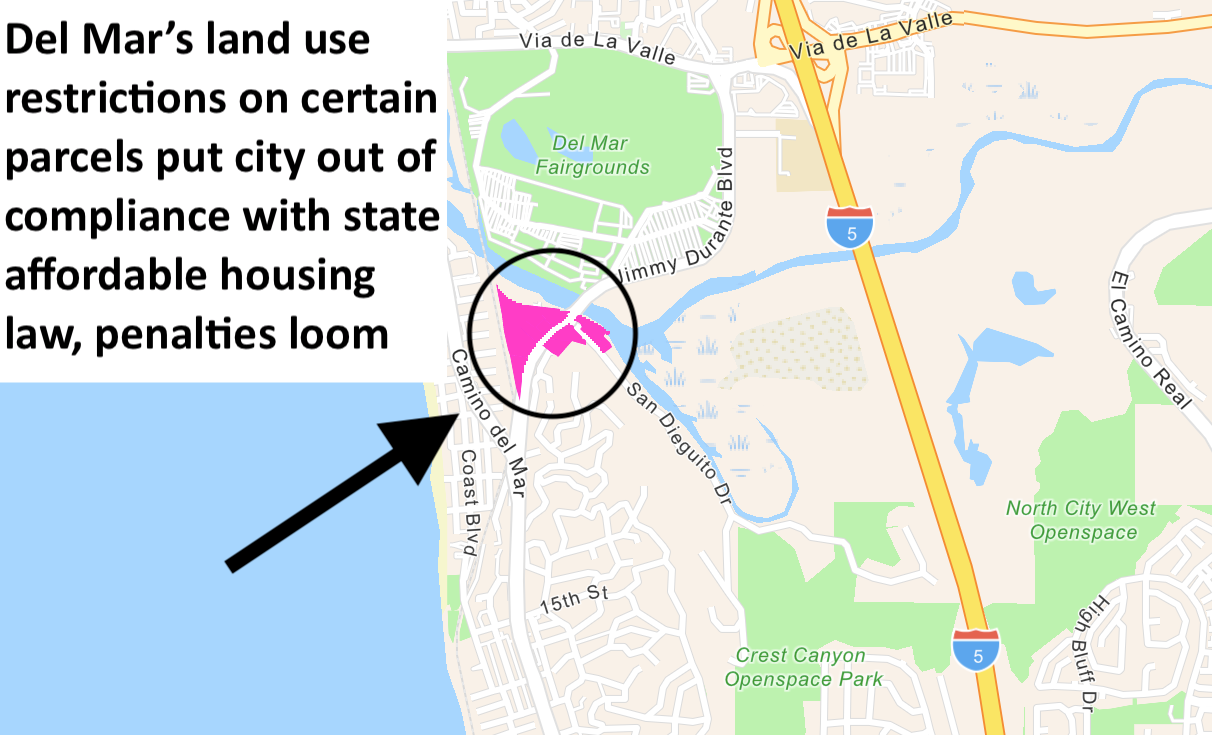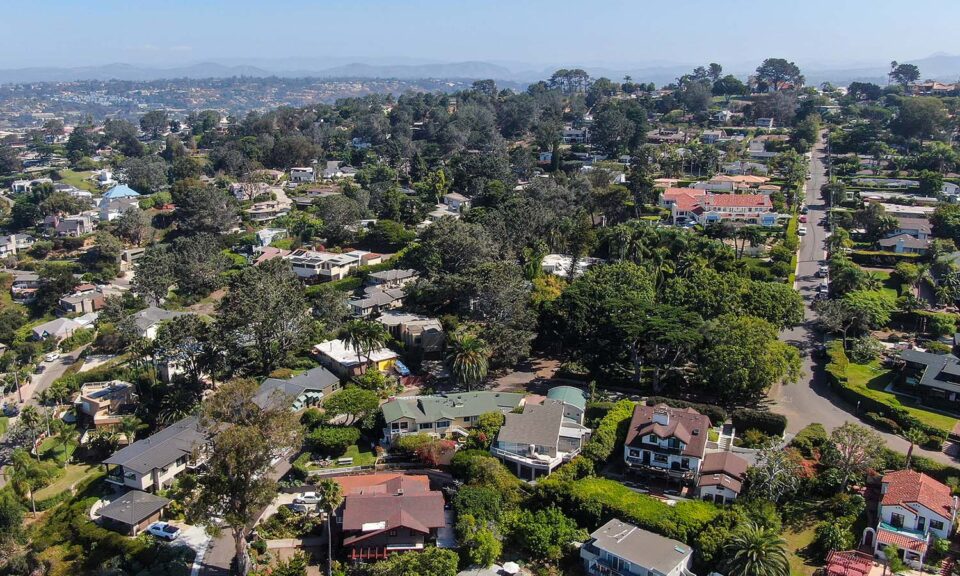DEL MAR — The Del Mar City Council will consider on Oct. 19 how to avert penalties for failing to bring certain local land use regulations into compliance with state affordable housing law.
Continued noncompliance could result in the state overriding local land use authority, ineligibility for grant funding, increased future housing production targets, lawsuits or fines.
According to the state-certified 2013-2021 Housing Element (or chapter) of its General Plan, the city would implement three land-use changes — designated Programs 2-E, -F and -G — by certain deadlines. The 2021-2029 Housing Element Update, which council voted 3 to 2 at their Oct. 5 meeting to submit to the state for initial review, also assumes these changes.

The city has made one of the modifications, albeit years past due, but two remain undone.
First, no later than 2015, the city would “up-zone” — allow denser multifamily residential construction on — certain commercial parcels near Shores Park. Council did so unanimously at their Sept. 8 meeting.
The state more or less considers density — in Del Mar’s case, at least 20 dwelling units per acre — a proxy for affordability. The logic being that more units enable builders to achieve economies of scale.
Second, the city would similarly up-zone its North Commercial area, near the San Dieguito Lagoon. Councilmembers Terry Gaasterland and Dave Druker blocked this change Sept. 8, preventing the supermajority required for one of the modification’s legislative elements.
In a bitter 3-2 decision Monday, Council passed a second legislative element that required only a simple majority. That inches the city toward compliance, but still won’t satisfy the state, Councilman Dwight Worden told The Coast News.
The third change, also as yet unmade, would allow extra residential density and ministerial development approval on two specific North Commercial properties, dubbed the “Watermark” parcels. The current adopted Housing Element called for this change no later than 2014.
With the latter two land-use changes unmade, “the city’s Housing Element no longer substantially complies with California’s Housing Element Law,” the state’s Housing and Community Development Department (HCD) told the city manager in a Sept. 30 letter.
HCD gave the city until Oct. 30 to respond. After that, HCD will consider enforcement actions.
“They’ve given us 30 days … to explain to them why they shouldn’t drop the hammer or … how we’re going to fix it,” Worden said.
Councilmembers on both sides of the issue have repeatedly and categorically disagreed about what a fix should look like.
Against recommendations from the planning commission and city staff, Gaasterland and Druker say the city hasn’t fully explored alternatives the state might accept.
Gaasterland said allowing higher North Commercial density poses sea level rise and wildfire risks. Instead, the city might incentivize affordable units in certain existing buildings’ renovations or implement a rent subsidy program, she told The Coast News.
She disputes the formulas by which the state and SANDAG, a regional body, allocate affordable housing quotas, citing a recent study from the Embarcadero Institute, a Bay Area nonprofit.
“We really ought to be pushing in parallel … to be fighting these numbers,” she said.
“You’re basically trampling the minority’s rights,” Druker told the council majority Monday. With three of five council seats up for grabs, he says major land-use decisions should occur after November’s election.


